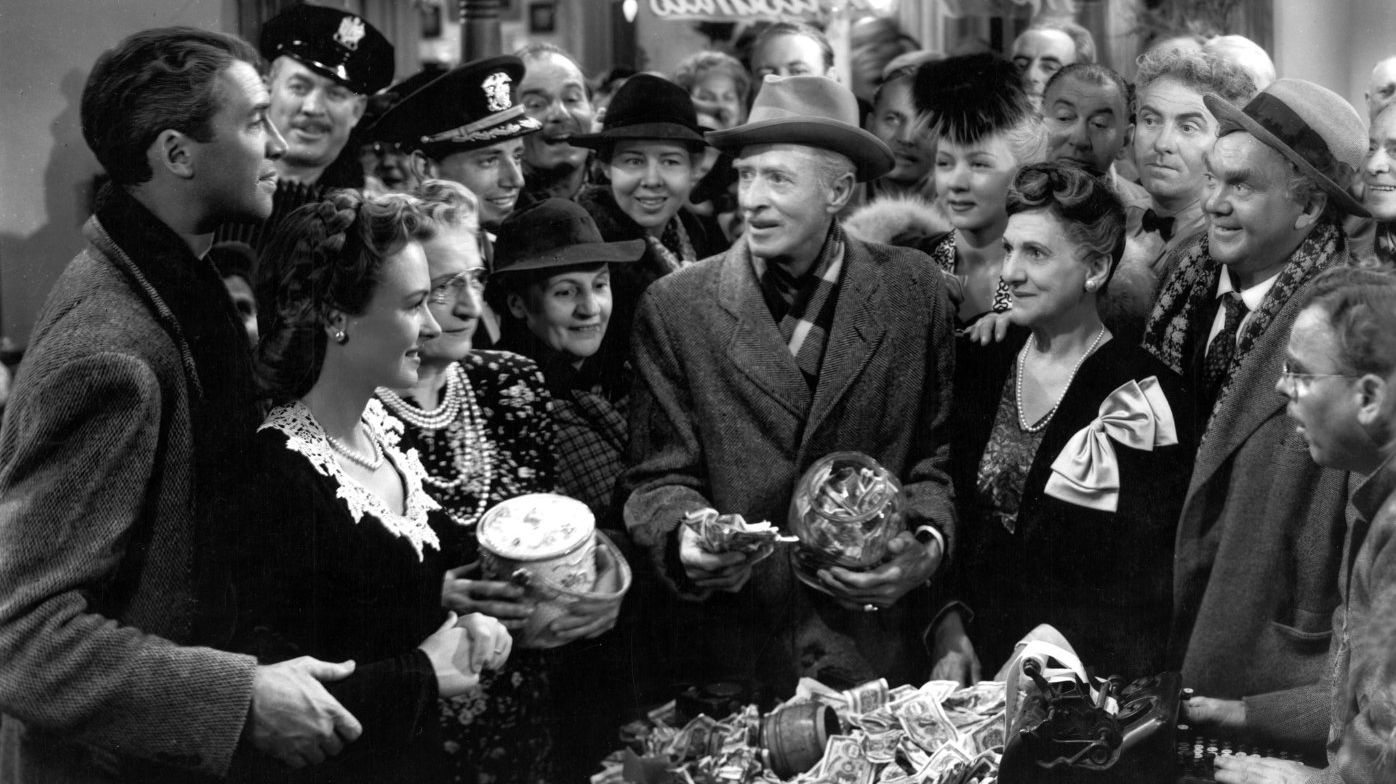
One year shy of its 75th anniversary, Frank Capra’s It’s a Wonderful Life arrives on 4K Ultra HD Blu-ray with a beautiful steelbook cover.
To be fair, this is not the first 4K UHD release for the classic film. It was previously released last year on 4K UHD. The difference between the two versions is that this one includes a mini-poster and a steelbook cover. The remastered and restored Black & White version is on 4K. Meanwhile, the colorized version is on Blu-ray.
I’m not going to get into the plot here because it’s on TV every year. However, I don’t know if it’s my TV, 4K player, or the disc but the 4K UHD disc has some synch issues. However, the digital version was perfectly in sync.
After serving in World War 2 (see Five Came Back by Mark Harris), Frank Capra started up Liberty films with William Wyler and George Stevens. Ultimately, it would prove to be a disaster. Where colleague William Wyler would direct The Best Years of Our Lives, Capra turned to Philip Van Doren Stern’s short story, The Greatest Gift, as the basis for It’s a Wonderful Life. What drew Capra to the story, which became a booklet and later a magazine story, is this idea of looking at life through another perspective.
Serving in the war had given Capra a new lens for which to see a movie. What was coming from Hollywood during this time simply wouldn’t do. The studio system would be in its final years especially with the 1948 Paramount decree by the courts. By this time, a growing number of filmmakers were not under contract to studios. Instead, they were forming their own production companies.
Capra initially wanted to remake his 1934 Columbia horse racing comedy, Broadway Bill. Unfortunately, he couldn’t obtain the rights and so he turned his attention towards It’s a Wonderful Life. Getting the film off the ground proved to be a hard pitch at first. Ultimately, Jimmy Stewart said yes. While there are three credited writers, a few came and went, including Dalton Trumbo. Trumbo’s take would have made George Bailey a failed politician. Capra wanted a tone that switched between light and melodramatic. When screenwriters Frances Goodrich and Alfred Hackett came on board, all prior drafts were thrown out. They weren’t happy and so Capra would do the job himself.
Coming off of making propaganda documentaries for the War Department, it’s no shocker that Capra uses the narration, if lightly, to get a message across. Meanwhile, Capra’s mindset was that audiences wanted to see a mix of fantasy and nostalgia. Moreover, the filmmaker draws on his previous films. There’s a lot of Capra’s own feelings in the final product. He had thoughts that he would be forgotten and so he makes a film about what happens if someone had never been born. You can really see Capra’s feelings come through on the screen after George wishes he had never been born.
Capra thought he knew what audiences wanted to see. After the war, audiences wanted to see social dramas. Not the uplifting films that Capra made during his career. Sixteen years and five movies later, Capra would retire from filmmaking. Television was a new technology in the late 1940s/early 1950s but it would come to help make It’s A Wonderful Life the classic film that it is today.
Bonus Features
- Restoring A Beloved Classic (4K)
- Secrets from the Vault: It’s A Wonderful Life (4K)
- It’s A Wonderful Wrap Party (4K)
DIRECTOR: Frank Capra
SCREENWRITER: Frances Goodrich, Albert Hackett, and Frank Capra
CAST: James Stewart, Donna Reed, Lionel Barrymore, Thomas Mitchell, Henry Travers, Beulah Bondi, Ward Bond, Frank Faylen, Gloria Grahame





